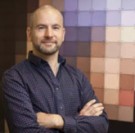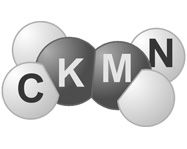Avondlezing door dr. Lambert van Eijck georganiseerd door de Chemische Kring Midden Nederland.
De lezing wordt voorafgegaan door de Algemene Leden Vergadering (aanvang 19:30 uur).
Samenvatting
Preservation of heritage implies that the diagnosis of the degradation processes needs to be non-invasive itself. This often has the consequence that the applied experimental techniques only detect the outer surface of the object, rendering the degradation processes partially invisible. Complementary to X-ray CT scans, we use neutron CT scans to visualize the interior of solid cast bronzes. This allows museums to choose a well-informed conservation strategy for their collections, but it can also give a wealth of information for historian and curators on customs and craftmanship of ancient societies.
In this colloquium I will present recent results and ongoing research on heritage object and how we exploit the benefits of neutrons as low-energy non-ionizing particles in this field. With the combination of new beam lines and existing infrastructure at the Reactor Institute of TU Delft, we develop methods to obtain the internal structure and composition of the bulk. For heritage artifacts, this often means that the (centuries old) pristine state and composition is revealed and I will show examples on bronzes of the collection of the Rijksmuseum Amsterdam, votive coffins and how we resolved the mystery of the Van Leeuwenhoek microscope.
Curriculum vitae: Lambert van Eijck is assistant professor at the Radiation Science and Technology department of the Faculty of Applied Sciences at the TU Delft. He develops analytical (experimental) methods for neutron-based materials science with a recent focus on heritage science applications. The work in done in collaborations which are inherently very multidisciplinary, involving national and international museums and the broad field of heritage and archaeology scientists at the Dutch Agency for Heritage and the Ateliergebouw of Rijksmuseum Amsterdam.
Lambert van Eijck is assistant professor at the Radiation Science and Technology department of the Faculty of Applied Sciences at the TU Delft. He develops analytical (experimental) methods for neutron-based materials science with a recent focus on heritage science applications. The work in done in collaborations which are inherently very multidisciplinary, involving national and international museums and the broad field of heritage and archaeology scientists at the Dutch Agency for Heritage and the Ateliergebouw of Rijksmuseum Amsterdam.
https://www.tudelft.nl/2018/tu-delft/mysterie-superieure-leeuwenhoek-microscoop-na-350-jaar-opgelost
https://www.tudelft.nl/2022/tnw/een-kijkje-in-het-3000-jaar-oud-zwaard-nemen
Introducé(e)s zijn van harte welkom.
Graag vooraf bericht als u verwacht te komen.
Stuur daartoe een mail naar chemdorpjwj@hotmail.com

